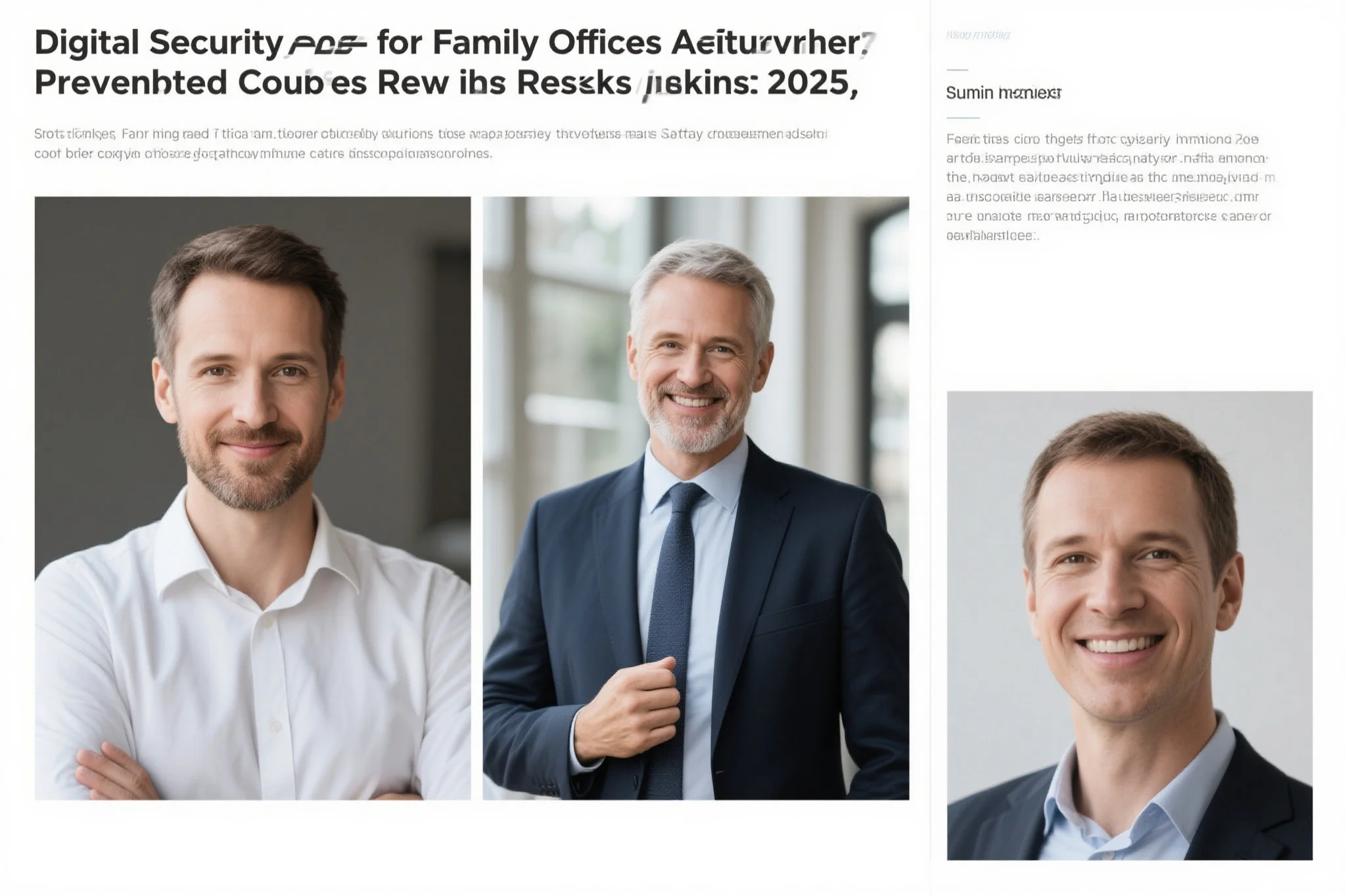
Digital Security for Family Offices: Preventing Cyber Risks in 2025
Understanding the Digital Landscape for Private Wealth Management
As family offices evolve into sophisticated financial entities managing billions in private wealth security, they’ve become increasingly attractive targets for cybercriminals. The reasons are simple: vast financial resources, relatively limited cybersecurity infrastructure, and confidential client data. In 2025, the digital threat landscape is broader and more dynamic than ever, compelling family offices to rethink how they approach family office cybersecurity. Gone are the days when basic antivirus software and a firewall could provide sufficient protection. Now, threats come in the form of social engineering, ransomware, AI-driven fraud, and vulnerabilities in third-party platforms.
Despite the high stakes, many family offices still underestimate the importance of advanced tech compliance. They rely heavily on personal relationships and outdated systems, often run by a small staff or a single outsourced provider. This creates a situation where hackers only need to compromise one weak link to access sensitive financial structures and family information. Recognizing this, forward-looking family offices are shifting toward enterprise-level security models, incorporating proactive monitoring, encryption, secure cloud-based storage, and endpoint detection and response (EDR) tools. This proactive posture marks a significant change from reactive fixes toward a culture of continuous cyber vigilance.
Building a Cybersecurity Culture from the Ground Up
Implementing effective cybersecurity begins with cultivating a culture of awareness. Every member of the family office—whether an advisor, admin, or family member—must understand that digital security is not merely an IT concern but a core operational priority. This is especially true as digital assets and virtual meeting platforms become central to wealth operations. Investing in ongoing training and simulated threat scenarios equips all stakeholders with the tools to identify and react to suspicious behavior, thereby lowering overall risk.
Moreover, building a culture of security means integrating data policies into daily operations. Multifactor authentication (MFA), strict access controls, and encrypted communications should be standard, not optional. Organizations must also prepare for internal threats—not every data breach comes from an outside hacker. Disgruntled former employees or careless insiders pose real risks. Internal audits and access tracking play a crucial role in protecting data protection. This internal focus must be paired with external audits and penetration testing conducted by cybersecurity specialists who understand the nuances of digital threat environments within high-net-worth ecosystems.
Choosing the Right Cybersecurity Framework
Every family office requires a customized cybersecurity framework that aligns with its structure, risk profile, and jurisdictional obligations. There is no one-size-fits-all solution. A family office that operates across multiple countries, for instance, must navigate different privacy laws and compliance mandates. Cybersecurity strategies must take into account not only regulatory tech compliance but also family dynamics, third-party access, and legacy IT systems. A growing number of offices are turning to models inspired by ISO/IEC 27001, NIST Cybersecurity Framework, and CIS Controls to guide their defenses.
The implementation of a tailored framework ensures layered security, where multiple defenses backstop each other. For example, strong user authentication protects endpoint devices while secure VPNs encrypt network access. Simultaneously, data loss prevention (DLP) tools monitor sensitive data movement, and intrusion detection systems (IDS) flag unauthorized access attempts. When coordinated under a unified protocol, these systems provide scalable protection capable of adapting to the evolving risk landscape. Documentation is equally important—cybersecurity policies must be written, shared, and updated regularly to serve as a reference point for both preventive and emergency actions.

Incident Response and Recovery: Preparing for the Inevitable
Even with top-tier defenses in place, no system is invulnerable. That’s why a well-structured incident response (IR) plan is essential. In 2025, the speed of response often determines the scope of damage. Family offices should establish a chain of command, designate a response team, and outline steps for breach containment, system restoration, and legal disclosure. This is not just about damage control—it’s about preserving reputation and client trust in the wake of a cyber event.
Family offices must also evaluate cyber insurance policies tailored to the unique nature of private wealth security. These policies offer critical coverage for losses tied to digital breaches, including business interruption, extortion, and legal liability. Recovery strategies should also include secure data backups stored offsite or in immutable storage formats that cannot be altered by ransomware. Additionally, a regular schedule of mock incident drills can test the responsiveness of the team and highlight gaps in the recovery plan. Having these procedures in place before an attack occurs is key to minimizing disruption.
Emerging Technologies and Their Security Implications
While innovation is essential to maintaining a competitive edge, it often introduces new vulnerabilities. Technologies like blockchain, AI-driven trading algorithms, and Internet of Things (IoT) devices are increasingly embedded in family office operations. But these tools expand the attack surface, offering more entry points for bad actors. For example, unsecured IoT devices can serve as gateways into more sensitive systems. Similarly, AI tools, if not properly secured, can be manipulated to make flawed investment decisions or leak confidential data.
Staying secure in this environment demands ongoing evaluation of both new tools and their associated risks. Before implementing any new tech solution, offices should conduct a thorough cybersecurity risk assessment and ensure vendors comply with leading security standards. Tech-savvy family offices are also establishing internal committees to vet technologies not only for utility but also for their implications on family office cybersecurity. Vetting includes reviewing software code, scrutinizing vendor history, and ensuring contractual clauses on data ownership and breach notifications are clear. This level of diligence ensures that innovation does not come at the cost of security.
Final Thoughts: Security as a Strategic Imperative
As the digital world continues to evolve, family offices must approach data protection as an ongoing, strategic imperative rather than a one-time project. With financial stakes so high and personal reputations on the line, cybersecurity is now central to long-term success in private wealth management. It impacts every aspect of the family office—from investment strategies and communication channels to governance and next-generation succession planning.
Effective security is not a matter of luck or timing but the result of informed, continuous action. The tools, frameworks, and talent are all within reach. What’s required is the commitment to prioritize digital threat awareness and response at every level of the organization. In doing so, family offices can protect more than just their data—they can safeguard their legacy for generations to come.